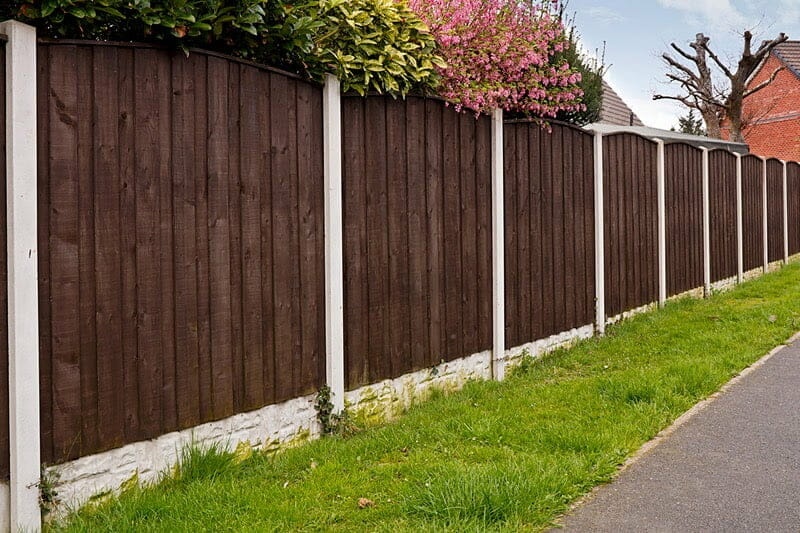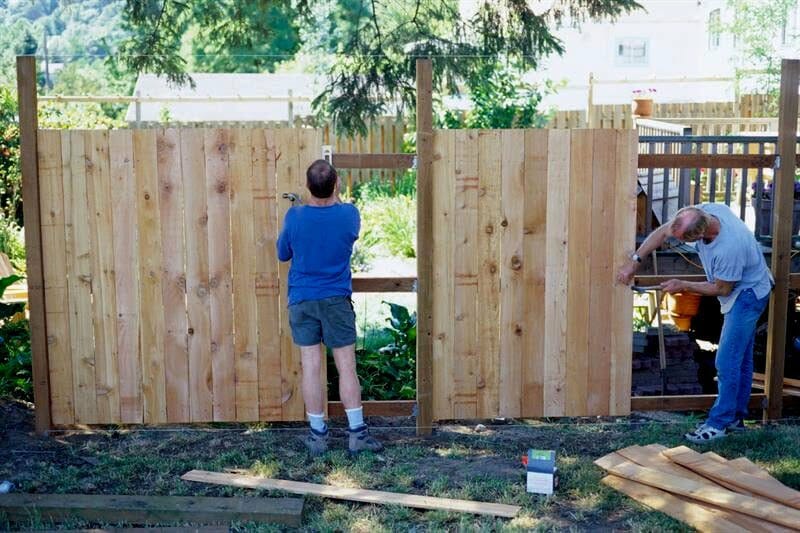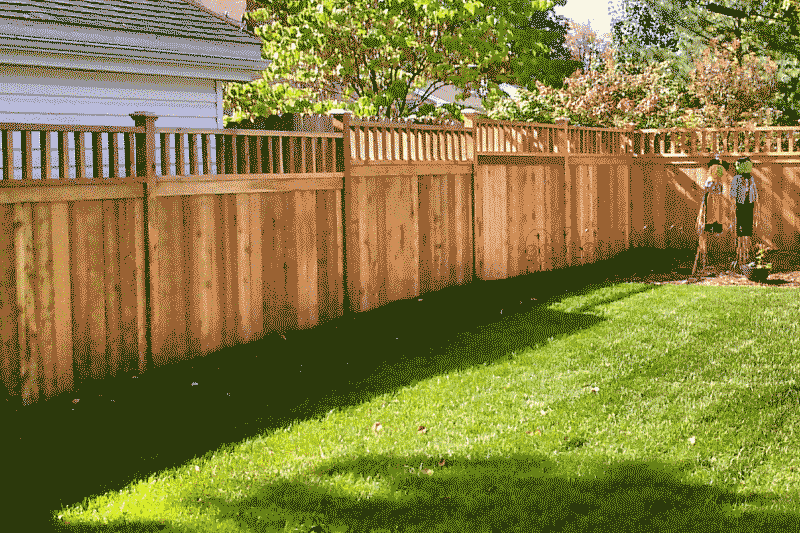Having a solid fence provides considerable advantages in terms of privacy. Generally speaking, the taller the fence is, the greater level of privacy one can enjoy. However, the main challenge lies in determining the allowable height for a fence.
In general, you cannot put a 6-foot fence in your front garden. If you want to install a fence that is that high, you will need to apply for a permit. It is only after being granted a permit can you install it. This is because most local authorities only allow a maximum height of up to 4 feet for front yard fences.
Here is what you should know.
How tall can a front yard fence be?
Generally, most areas allow front yard fences that are up to 4 feet tall. In order for homeowners to install taller fences, they have to seek the permission of the local authority in their respective areas. This is often done by applying for a permit. But once the permit is granted, one can build as tall a fence as the permit allows.
But what height is actually acceptable in your area?
Some local jurisdictions allow front fences that are taller than 4 feet, even without the requirement for a permit. Others only allow front yard fences for as long as they are shorter than 4 yards. And others completely forbid front yard fences.
A good indicator of the acceptable fence height in your area is to look at the type and heights of fences in your neighborhood. This is because a Homeowners Association (HOA) tends to impose additional fencing restrictions.
HOAs typically do so to ensure uniformity. Some of the rules that they impose are also meant to ensure that neighbors don’t infringe on other neighbors’ right to enjoy their property.

Is a property survey necessary before installing a front yard fence?
While a survey isn’t a must, it is advisable.
Doing a proper survey will clarify your property boundary. It will help to avoid cases of accidentally building a fence on a neighbor’s property, something that can lead to boundary conflicts.
And since these conflicts are a common cause of bad blood and litigation among neighbors, taking the time to get it right is often worth the effort.
What is the maximum fence height you can install without a permit?
In most areas, the maximum height for a front yard fence is 4 feet. As for backyard fences, the limit is usually 6 feet. However, one can always get permission to build a new fence that exceeds these limits provided they apply for and get a permit from the local council in their area.
Why are there restrictions on the heights of fences?
Height restrictions exist because of the following reasons.
Comfort and convenience
Very tall fences can be a nuisance to neighbors.
A new fence installation that exceeds the six-foot fence limit can cast an inconvenient shade on a neighbor’s garden. It can restrict airflow in the neighborhood. And it can also block a beautiful view or morning sunshine.
To ensure that neighbors aren’t overwhelmingly inconvenienced, height restrictions exist. And in doing so, they make life a little more comfortable and convenient for homeowners and their neighbors.
Safety
For properties that are next to streets, roads, and intersections, fence restrictions help to guarantee safety.
Without these restrictions, people would build tall fences. Such a fence installation would impede visibility, cause blind spots and eventually increase the risks of accidents. And so these restrictions help to make neighborhoods safer.
Aesthetics
HOAs impose fence restrictions in order to ensure uniformity. This is because varying fence heights can ruin the aesthetics of the neighborhood. Therefore, they often define height limits of new fence installations in order to maintain property values.
What are some of the reasons why you may want to build a fence?
Fences are important for a number of reasons. Here are the top reasons why they are often a necessity.
To block an ugly view
If you live in an area with an unsightly view, or next to a neighbor who takes poor care of their property, you can use a six-foot fence to block this view. However, you should keep in mind that not all fences can offer this luxury. Some, like a chain-link fence, do little as far as blocking unsightly views is concerned.
To reduce sound pollution
If you have noisy neighbors or if you live next to a busy street, installing it can go a long way towards reducing the amount of noise that reaches your home. This is because a good fence can act as an effective sound barrier. It may thus dampen the intensity of noise, something that will afford you and your loved ones a reprieve from noise pollution.
To improve security
A good fence is often a good security feature. It helps to discourage thieves and other criminals from committing crimes on your property. This is so especially if the fence has additional security features like security cameras, alarm systems, and electrification.
To shelter a home
Strong winds can wreak havoc on your home and any structures or plants in your yard. Harsh weather elements like extreme heat under the sun can also be detrimental.
A good fence offers protection against extreme weather. It will act as a windbreaker when there is a need for one. And it will also provide shade when it is positioned correctly.
Do you need a permit to install a fence?
No, you don’t need a permit to install a fence provided the fence complies with height restrictions that are imposed by the local authority in your area. In most areas, a homeowner doesn’t need to apply for planning permission if their front yard fence is below four feet and their backyard fence is below 6 feet.
However, if one wants to install a fence that is taller than the legally allowed limits, then they need to apply for a permit.
There are also cases where one may need to get planning permission even in cases where the fence does not exceed the height limits outlined by a local authority. As a rule of thumb, any structure that needs to be built near or in a conservation area requires a permit.

What if you don't get a permit?
If the local authority in your area forbids constructing a fence that is taller than 4 feet (for the front garden fences without a permit, and your application for building a higher fence is denied, you can:
- Resubmit your application after making the necessary changes
- Give up on the idea of using a fence that is six feet tall on your front garden
- Go ahead and install the fence anyway
If you choose to do it anyway, you will be in violation of local laws.
The local authority can decide to order you to take down the fence. They can also fine you and impose other punitive penalties like revoking licensing permissions or privileges.
Your neighbors can also take you to court.
Keep in mind that height limitations for fences exist in order to make it easier for your neighbors and the public at large to be safer and happy. Therefore, if your fence becomes a nuisance, or gives rise to a dangerous situation, you can end up in court.
Who owns a border fence?
A border fence is owned jointly by both neighbors. They have equal rights as far as the fence is concerned. And they are also supposed to share in the burden of installing and maintaining the border fence. It is because of this that most areas require a neighbor’s consent any time a homeowner wants to install or remove a border fence.

Do you always have to replace a fence if it is too short?
If the previous owner of your property installed a fence that is too short, you don’t have to replace it. You can easily increase its height by installing an extension. And provided the after-installation height is within the height limits in your area, you won’t need to apply for planning permission first before installing it.
Installing an extension comes with a few advantages. For starters, it is cheaper than completely replacing an existing fence. It also offers the benefit of a tall fence without the accompanying cost. You can also make it angled for extra functionality — like to contain pets. And you can also use it to give your property better privacy.
However, you may need to seek a planning permission if the extension ends up making your fence taller than the allowable height limits. In such a case, you may need to apply for a variance before extending your fence.







